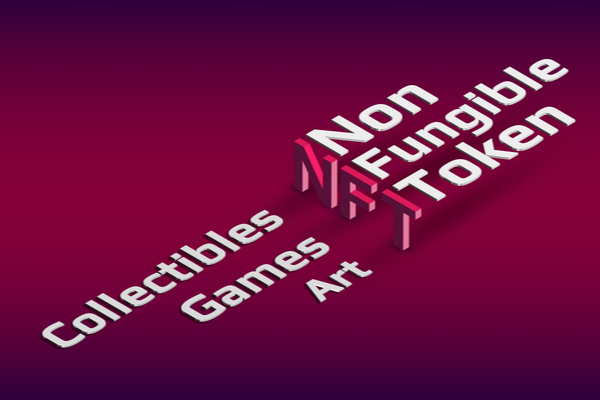An NFT stands for Non-Fungible Token. Something’s that’s fungible can be replaced by something else that means the same – like swapping $10 for 10 $1 bills. Non-fungible, then, means that it’s completely unique – like a one-off pressing of a vinyl record, a unique manuscript or a particular painting. The NFT is like a certificate of authenticity, deed or ownership to an asset, so it’s this that can be sold. But things aren’t straightforward as the asset itself might be able to be shared freely – so the NFT is the claim to ownership of an item, not the item itself. Slightly confusing.
NFTs are secured with blockchain tech similar to Bitcoin (they’re actually part of the Ethereum blockchain). Blockchains are, essentially databases that are encrypted and decentralised. They’re hard to compromise due to the decentralised approach. But an NFT is not like a Bitcoin, because Bitcoin can be exchanged for other Bitcoin – it’s fungible.
What kinds of things are becoming available via NFTs?
Artworks (known as crypto art) are being made available via the format – artist Beeple’s Everydays NFT artwork was listed for sale at Christie’s and an animated image of the Nyan Cat meme sold for a whopping $580,000. Yes, really! And it’s this type of creative work we’re seeing a lot more appear using NFTs to prove ownership. Again, such art can be viewed by others – but there’s only one owner with access to the NFT. Things might get a little confusing here, because just like with a physical painting, copies can be made – they just aren’t the original.
Indeed, not everything has to be unique; they could just be a limited run. Band Kings of Leon have just announced they will make a deluxe $50 version of their new album available as an NFT. There will be lots of copies of this, although it’ll be available as a limited two-week run. This will include downloadable items (including the music, of course) as well as a vinyl copy (we don’t know how that works yet).
There are plenty of other examples of NFTs at work beginning to crop up – TV show American Gods is making collectibles available using the format. Nike also experimented with NFTs to go alongside physical pairs of shoes and increase their collectibility (as Input points out, the format is here to “create more sneakers you can’t get”). There’s also been an NBA app called NBA Top Shot that uses NFT’s. In-game items, domain names or event tickets are other examples of items that could easily be made available using NFTs.
The term has actually been around since 2017 and there are now a couple of standards to support the use of NFTs, too. There’s been some coverage – as with Bitcoin – of the effect of NFTs and associated digital assets on high energy use and therefore the negative effect on the environment.
What problem do NFTs solve?
People like collecting physical stuff, but in the digital world there’s no equivalent and it’s this gap NFTs are looking to solve. They can be traded on every Ethereum marketplace.
Indeed, NFTs have the potential to prove ownership over any asset in the future – eventually they could be used to prove ownership of a house, boat or car for example. Crucially, an NFT can only have one official owner and the information over ownership can be seen. The creator of any work can retain copyright over it – just as in the physical world. The transfer of ownership of the original doesn’t change this.
—
Photo Credit: Vladimir Kazakov / Shutterstock.com
